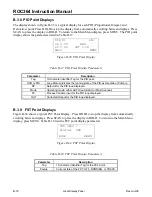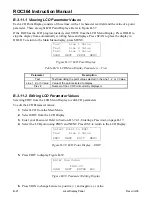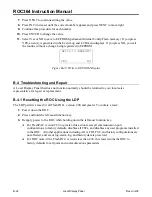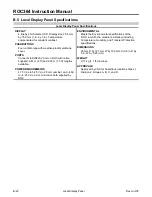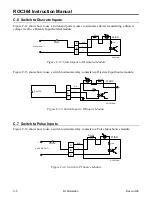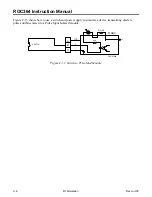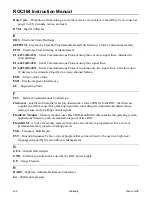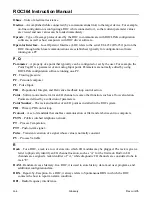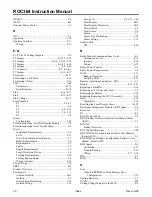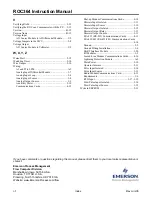
ROC364 Instruction Manual
G-4 Glossary
Rev
Jun/05
Ohms
– Units of electrical resistance.
On-line
– Accomplished while connected (by a communications link) to the target device. For example,
on-line configuration is configuring a ROC while connected to it, so that current parameter values
are viewed and new values can be loaded immediately.
Opcode
– Type of message protocol used by the ROC to communicate with ROCLINK configuration
software, as well as host computers with ROC driver software.
Operator Interface
– Local Operator Interface (LOI) refers to the serial EIA-232 (RS-232) port on the
ROC through which local communications are established, typically for configuration software
running on a PC.
P, Q
Parameter
– A property of a point that typically can be configured or set by the user. For example, the
Point Tag ID is a parameter of an Analog Input point. Parameters are normally edited by using
ROCLINK configuration software running on a PC.
Pf
– Flowing pressure.
PC
– Personal computer.
PI
– Pulse Input.
PID
– Proportional, Integral, and Derivative feedback loop control action.
Point
– Software-oriented term for an I/O channel or some other function, such as a flow calculation.
Points are defined by a collection of parameters.
Point Number
– The rack and number of an I/O point as installed in the ROC system.
PRI
– Primary PID control loop.
Protocol
– A set of standards that enables communication or file transfers between two computers.
PSTN
– Public switched telephone network.
PT
– Process Temperature.
PTT
– Push-to-talk signal.
Pulse
– Transient variation of a signal whose value is normally constant.
PV
– Process Variable.
R
Rack
– For a ROC, a rack is a row of slots into which I/O modules may be plugged. The rack is given a
letter to physically identify an I/O channel location, such as “A” for the first rack. Built-in I/O
channels are assigned a rack identifier of “A,” while diagnostic I/O channels are considered to be in
rack “E”.
RAM
– Random Access Memory. In a ROC, it is used to store history, data, most user programs, and
additional configuration data.
RBX
– Report-by-Exception. In a ROC, it always refers to Spontaneous RBX in which the ROC
contacts the host to report an alarm condition.
RFI
– Radio frequency interference.

